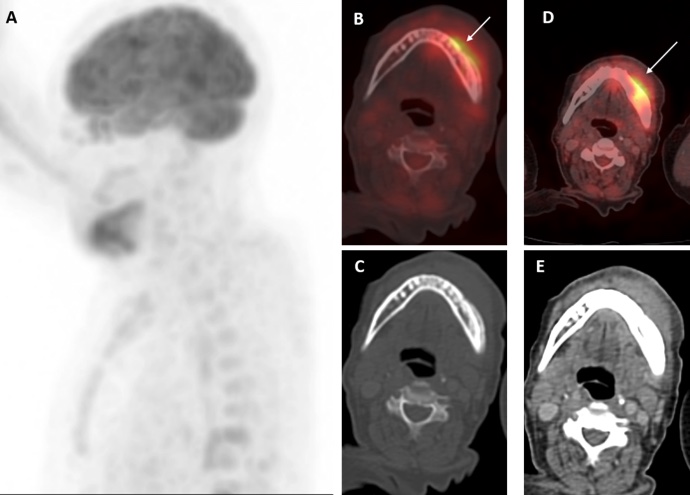Denosumab-Induced Osteonecrosis of the Jaw with FDG PET/CT imaging features.
DOI:
https://doi.org/10.59667/sjoranm.v13i1.18Keywords:
MANDIBLE, DENOSUMAB , OSTEONECROSIS, FDG PET/CTAbstract
Denosumab is a monoclonal antibody that inhibits receptor activator of nuclear factor-kappa B ligand (RANKL), which plays a crucial role in osteoclast formation, function, and survival. By blocking RANKL, denosumab helps prevent bone resorption, making it an effective therapeutic option for managing conditions associated with bone metastases and osteopenia, such as in patients with lung cancer. Lung cancer, particularly non-small cell lung cancer (NSCLC), often metastasizes to bones, and denosumab is commonly used to reduce the incidence of skeletal-related events (SREs) in these patients. However, denosumab therapy is not without its risks, and one of the most significant side effects is osteonecrosis of the jaw (ONJ), a potentially debilitating condition characterized by bone exposure and necrosis, typically following dental extractions or trauma [1][2].
This case report explores the role of FDG PET/CT in diagnosing and managing Denosumab-induced ONJ in a patient with lung cancer, underscoring the value of this imaging modality in clinical practice.
References
1. Ruggiero SL, Bisphosphonate-related osteonecrosis of the jaw: an overview. Annals of the New York Academy of Sciences. 2011; Vol. 1218(1): 38 -46 https://doi.org/10.1111/j.1749-6632.2010.05768.x
2. Marx RE, A Decade of Bisphosphonate Bone Compli-cations: What It Has Taught Us About Bone Physiology, International Journal of Oral & Maxillofacial Implants, 2014, Vol 29, Issue 2, 247. https://doi.org/10.11607/jomi.te61
3. Glaudemans A, et al. The Use of 18F‐FDG‐PET/CT for diagnosis and treatment monitoring of inflam-matory and infectious diseases. Journal of Immunology Research 2013.1 (2013): 623036. https://doi.org/10.1155/2013/623036
4. Dinnoo A, et al. 18F-FDG PET/CT for early response as-sessment of jaw osteoradionecrosis after the PENTOCLO protocol: A promising imaging modality. Journal of Stomatology, Oral and Maxillofacial Surgery, Vol 123, Issue 4, 2022, e192-e198, https://doi.org/10.1016/j.jormas.2021.11.005

Downloads
Published
Issue
Section
License
Copyright (c) 2024 SALONI RAJKOTIA, RITESH SUTHAR, ABHISHEK PALSAPURE

This work is licensed under a Creative Commons Attribution 4.0 International License.
This license requires that reusers give credit to the creator. It allows reusers to distribute, remix, adapt, and build upon the material in any medium or format, even for commercial purposes.








